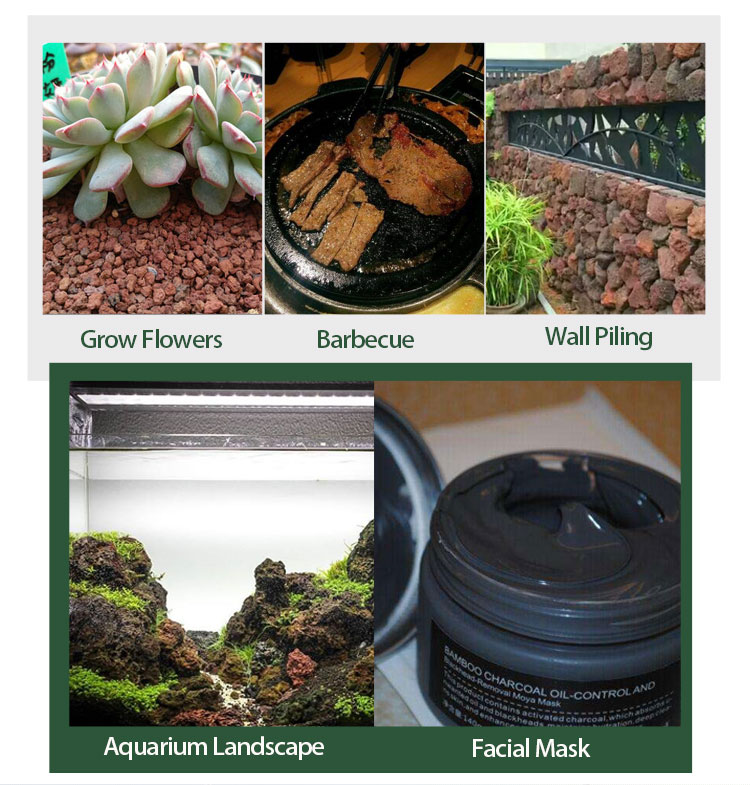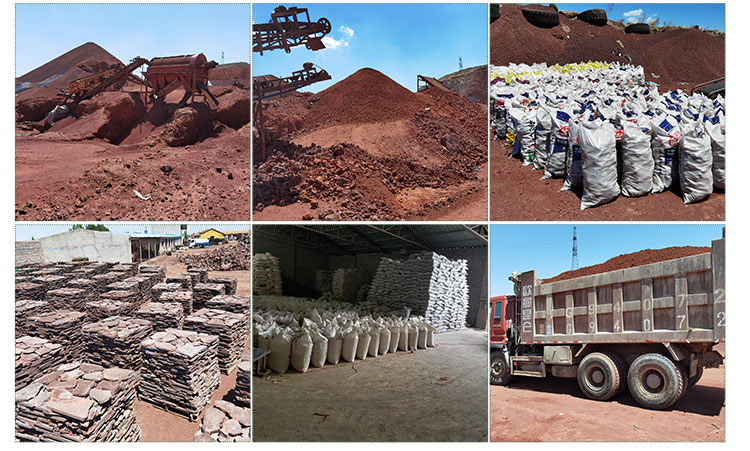Volcanic stone (commonly known as pumice or porous basalt) is a kind of functional environmental protection material. It is a very precious porous stone formed by volcanic glass, minerals and bubbles after volcanic eruption. Volcanic stone contains sodium, magnesium, aluminum, silicon, and calcium. Dozens of minerals and trace elements, such as titanium, manganese, iron, nickel, cobalt and molybdenum, have no radiation but have far-infrared magnetic waves. After the ruthless volcanic eruption, after tens of thousands of years, humans have discovered it more and more. The preciousness of. Now it has expanded its application areas to construction, water conservancy, grinding, filter materials, barbecue charcoal, garden landscaping, soilless cultivation, ornamental products and other fields, and it plays an irreplaceable role in all walks of life.
Effect:
The role of volcanic rock 1: Living water. Volcanic rocks can activate the ions in the water (mainly increase the content of oxygen ions) and can slightly release a-rays and infrared rays, which are good for fish, including humans. The disinfection effect of volcanic rocks is also not to be ignored. Adding to the aquarium can effectively prevent and treat patients.
The role of volcanic rocks 2: Stabilize water quality.
There are two more parts here: PH stability, which can adjust the water that is too acid or too alkaline to be close to neutral automatically. The mineral content is stable, volcanic rock has the dual characteristics of releasing mineral elements and absorbing impurities in the water. When it is too little or too much, its release and adsorption will occur. The stability of the PH value of water quality when Luohan starts and increases color is of vital importance.
The role of volcanic rocks 3: Seductive color.
The volcanic rock is bright and natural in color. It has a significant lure effect on many ornamental fishes such as Luohan, red horse, parrot, red dragon, Sanhu cichlid, etc. Especially Luohan has the characteristics of the color close to the surrounding objects, and the red color of volcanic rock It will induce Luohan’s color to gradually redden.
The role of volcanic rock 4: adsorption.
volcanic stone is porous and has a large surface area. It can absorb harmful bacteria in the water and heavy metal ions that affect the organism, such as chromium and arsenic, and even some residual chlorine in the water. Placing volcanic rocks in the aquarium can absorb the residues and feces that the filter cannot absorb to keep the water in the tank clean.
The role of volcanic stone 5: play props.
Most fish, especially Arhats, are not polycultured. They will also be lonely and lonely. Arhats have the habit of playing with stones to build their homes. Therefore, the light weight of volcanic rocks has become a good prop for it to play.
The role of volcanic stone 6: Promote metabolism.
The trace elements released by the volcanic stone can promote the metabolism of animal cells, and bring out harmful halides in the body and clean up the dirt in the cells. .
The role of volcanic stone 7: Optimizing growth.
volcanic stone can also increase protein synthesis in animals, enhance immunity, and to a certain extent increase Luohan’s mobility. This also played a big role when Luo Han started.
The role of volcanic rocks 8: Cultivation of nitrifying bacteria.
The high surface area produced by the porosity of volcanic rocks is a good hotbed for cultivating nitrifying bacteria in water, and the positive charge on its surface is conducive to the fixed growth of microorganisms. It has strong hydrophilicity and can reduce the NO2 and NH4 that are caused by various reasons in the water, which are very toxic to vertebrates. Conversion into NO3 with relatively low toxicity can greatly improve water quality
The role of volcanic rock 9: The substrate material for the growth of aquatic plants
Because of its porous characteristics, it is conducive to aquatic plants’ grasping and rooting and solidification. The various mineral components dissolved by the stone itself are not only beneficial to the growth of fish, but also can provide fertilizer for the aquatic plants. In agricultural production, volcanic rocks are used as soilless culture substrates, fertilizers and animal feed additives.
caution:
1 As the volcanic rock is broken and transported in large pieces, some residues and other sundries powder will be generated due to friction and impact. Directly entering the tank will cause the water to become turbid. Please soak in clean water for 24 hours and then wash it for several times. , The residues such as minerals in the stone hole and other chemical components in the packaging process can be filtered out, and then they can be put into the tank for use.
2 volcanic stone generally has the effect of softening the pH value and alkalinity, and it is generally acidic. However, it does not rule out the alkalinity caused by special water quality and other filter materials. Please always test the pH value in the tank during the initial stage of placement, so as to avoid special circumstances that may cause damage to the fish seedlings. Under normal circumstances, the influence of volcanic rocks on the pH value of water is between 0.3 and 0.5.
3 After 3-6 months of use, due to the consumption of minerals in the volcanic stone, it is recommended to replace it with a new one. You can also use saturated salt water to soak the used volcanic stone for 30 hours, and then use water to wash off the impurities thoroughly before continuing to use. This is the so-called volcanic rock reconstruction process. (Saturated salt water refers to the mixed solution of water and salt when table salt is continuously added to the water and the table salt is continuously melted until the added table salt no longer melts.)
volcanic stone, medical stone and ammonia-absorbent zeolite are non-toxic and odor-free natural non-metal filtering mineral materials, which can be used in free combination, or placed for special fish species. They have gradually become popular in the field of ornamental aquariums. At this stage, volcanic rocks are mainly used by aquarium players in cultivating nitrifying bacteria and filtering, and creating natural environment and scenery for fish bodies. It can be used as bottom sand directly on the bottom of the tank or installed in the filtration circulation system. The quantity to be used can be determined according to issues such as the type of fish, the number of fish, the proportion of other filter materials, and the size of the fish tank. Don’t be too superstitious and rely on a certain filter material, and should be used in a variety of combinations.
Post time: Mar-02-2021



